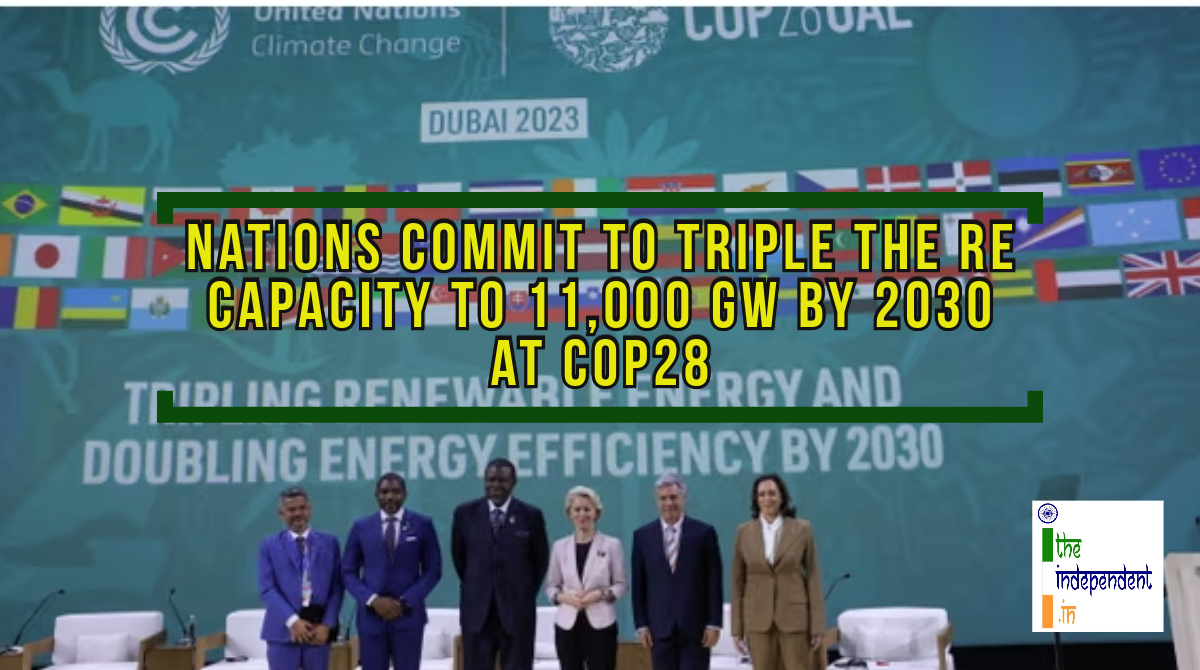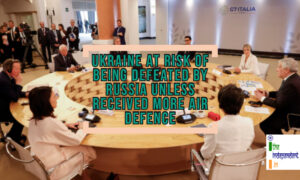
More than 100 countries commit to triple the RE capacity to 11,000 GW by 2030
More than 100 countries at the 28th meeting of the Conference of the Parties (COP 28) Summit in Dubai have agreed to triple renewable energy capacity by 2030 to at least 11,000 GigaWatts (GW) in just 6 years.
This renewed target is more than 20% higher than current projections of around 9,000 GW by that period. While renewables are already expanding fast, this latest goal would require solar and wind power deployments to speed up a lot.
However, these 100 countries have shared little details on how they can make this possible. To achieve these targets would mean pumping up investment in renewables, which the International Energy Agency (IEA) says hit U.S. $ 600 billion globally last year.
Taking it to X, the COP28 UAE tweeted,
We all want to get the most ambitious outcome possible. Our COP Presidency will do whatever is needed to get that today.#UniteActDeliver #COP28 pic.twitter.com/togd9808CF
— COP28 UAE (@COP28_UAE) December 12, 2023
Besides, there are signs of strain across the renewables industry. Supplies are short of equipment, from wind turbines to transformers. There is a labour shortage. The cost of wind and solar projects has spiralled up and local opposition to big energy projects has slowed layered bureaucracy with years-long processes to get permits. The developers also face long delays getting connected to the grid. The new high-voltage transmission lines to ease that bottleneck can take a decade or more to plan, permit and build, making the 2030 target more challenging.
Sharing his thoughts, the Director-General of the IEA – Francesco La Camera, said, “I don’t see clear signs that we are ready to overcome the barriers we have identified.”
On the upside, the industry has regularly exceeded historical growth forecasts, and there is more capital and Government support focused on it than ever before. As per a United Kingdom (U.K.) based think tank – Ember, A record 500 GW of renewable capacity is expected to be added globally in 2023, up from 300 GW in 2022, with China, Brazil, Australia and Japan set to exceed national targets. Ember said global renewable capacity would need a sustained growth rate of 17% annually to triple by 2030, a pace it has already been posting since 2016.
According to IEA, investment in renewables needs to more than double to over U.S. $ 1.2 trillion annually by 2030, to triple the capacity and be on a path to net zero emissions for 2050.
Infrastructure investors who helped catalyse the rapid expansion of solar and wind globally are investing cautiously because of higher interest rates, making it harder to finance and sell projects. The drop in infrastructure fundraising comes at a time when that cash is needed to build the networks to connect new projects to the grid. Logistical bottlenecks have also led to some costly setbacks for large-scale projects in some regions. Infrastructure funds raised U.S. $ 29 billion in the first 9 months of 2023, a decline from the U.S. $ 128 billion raised over the same period a year ago.







